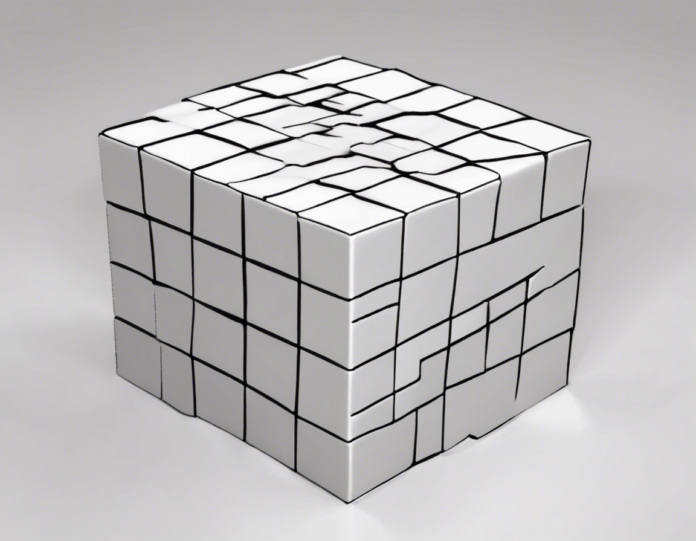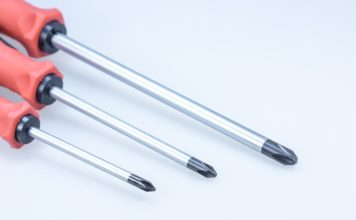When it comes to factoring and solving the expression (a^3 – b^3), it’s essential to understand the formula for the difference of cubes. The difference of cubes formula states that (a^3 – b^3) can be factored as ((a – b)(a^2 + ab + b^2)). This formula is crucial in simplifying and solving cubic expressions efficiently. In this article, we will delve into the concept of difference of cubes, its application in factoring, and how to solve expressions involving (\boldsymbol{a^3 – b^3}).
Understanding the Difference of Cubes Formula
The difference of cubes formula is a special case of polynomial factorization that comes in handy when dealing with cubic expressions. It helps in breaking down (a^3 – b^3) into two factors, namely ((a – b)) and ((a^2 + ab + b^2)). This factorization can simplify complex expressions and aid in solving equations involving cubes.
The Formula:
[a^3 – b^3 = (a – b)(a^2 + ab + b^2)]
Key Points to Remember:
- It only applies to the difference of cubes, not the sum.
- The first factor is the subtraction of the two cube roots.
- The second factor involves squaring the first term, multiplying the first term by the second term, and then squaring the second term.
Factorization of (a^3 – b^3)
Let’s break down the process of factoring (a^3 – b^3) using the difference of cubes formula:
Step 1: Identify the Cubes
In the expression (a^3 – b^3), (a) and (b) are cubed terms.
Step 2: Apply the Formula
Using the difference of cubes formula, we have:
[a^3 – b^3 = (a – b)(a^2 + ab + b^2)]
Step 3: Substitute the Values
Replace (a) and (b) in the formula with the corresponding terms from the original expression.
Step 4: Simplify
Once you substitute the values, simplify the expression by multiplying and adding as necessary.
Example:
Let’s factorize (8x^3 – 27y^3):
[8x^3 – 27y^3 = (2x – 3y)(4x^2 + 6xy + 9y^2)]
Solving Equations Using (a^3 – b^3)
The difference of cubes formula not only helps in factorization but also in solving equations involving (a^3 – b^3). When you have expressions like (a^3 – b^3 = 0), you can factorize and solve for the variables accordingly.
Example:
Given (64x^3 – 125 = 0), we can use the difference of cubes formula to factorize and solve:
[64x^3 – 125 = (4x – 5)(16x^2 + 20x + 25) = 0]
Setting each factor to zero gives us:
[4x – 5 = 0 \Rightarrow x = \frac{5}{4}]
[16x^2 + 20x + 25 = 0 \Rightarrow \text{No real solutions}]
Applications of the Difference of Cubes Formula
The difference of cubes formula finds applications in various fields, including algebra, calculus, and physics. Some common scenarios where this formula is useful include:
- Factoring cubic expressions in algebraic equations.
- Simplifying complex expressions involving cubes.
- Solving cubic equations efficiently.
- Understanding the relationship between cube roots in mathematics.
FAQs on Factoring and Solving (a^3 – b^3)
Q1: Can the sum of cubes also be factored similarly?
The sum of cubes, (a^3 + b^3), has a different formula for factorization, which is ((a + b)(a^2 – ab + b^2)). It follows a similar process but with a plus sign in the middle.
Q2: What if (a) or (b) are negative in the expression (a^3 – b^3)?
The formula still applies regardless of whether (a) or (b) is negative. The factorization remains the same.
Q3: How does the difference of cubes formula relate to the power rule in calculus?
The power rule in calculus helps in finding derivatives of functions involving polynomial expressions, including cubes. The difference of cubes formula is a specific case within polynomial functions where the power rule can be applied.
Q4: Can the difference of cubes formula be extended to higher powers, like (a^4 – b^4) or (a^5 – b^5)?
Yes, similar formulas exist for higher powers, such as the difference of fourth powers and fifth powers. The patterns for factorization in such cases follow different rules tailored to those specific powers.
Q5: Are there real-world applications of the difference of cubes formula?
In engineering and physics, the difference of cubes formula is employed in various calculations involving volumes, surface areas, and forces. It aids in simplifying equations and understanding the relationships between cubic terms.
By mastering the difference of cubes formula, you can efficiently factorize and solve cubic expressions, paving the way for tackling more complex algebraic problems with ease. Whether in academics or real-life applications, understanding this formula is a valuable tool in mathematical problem-solving.









